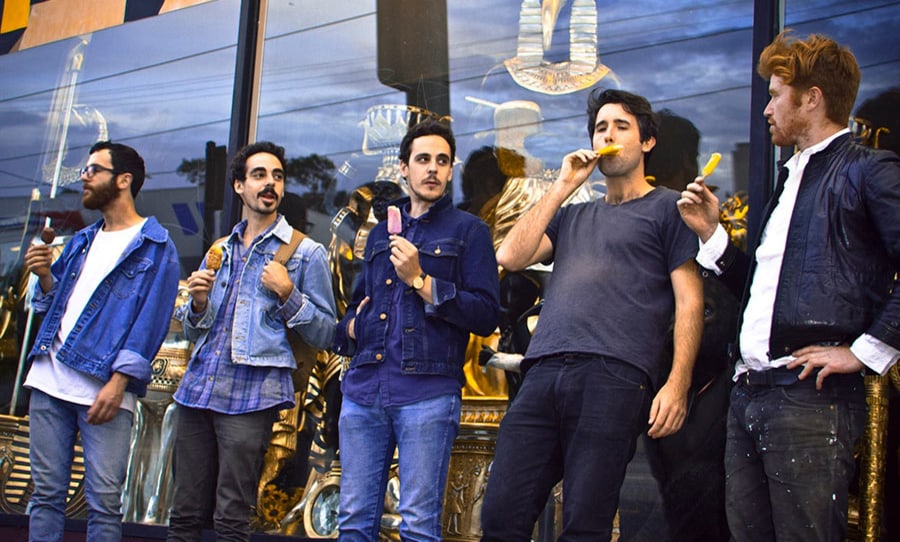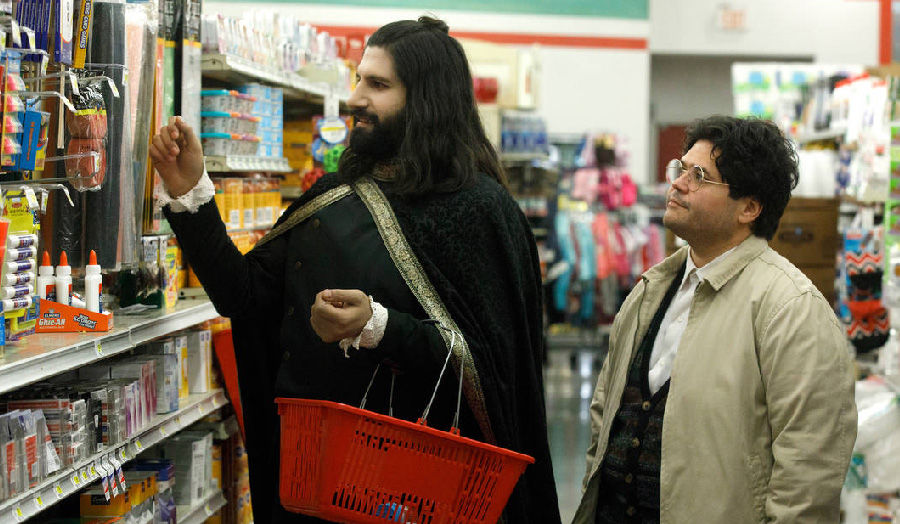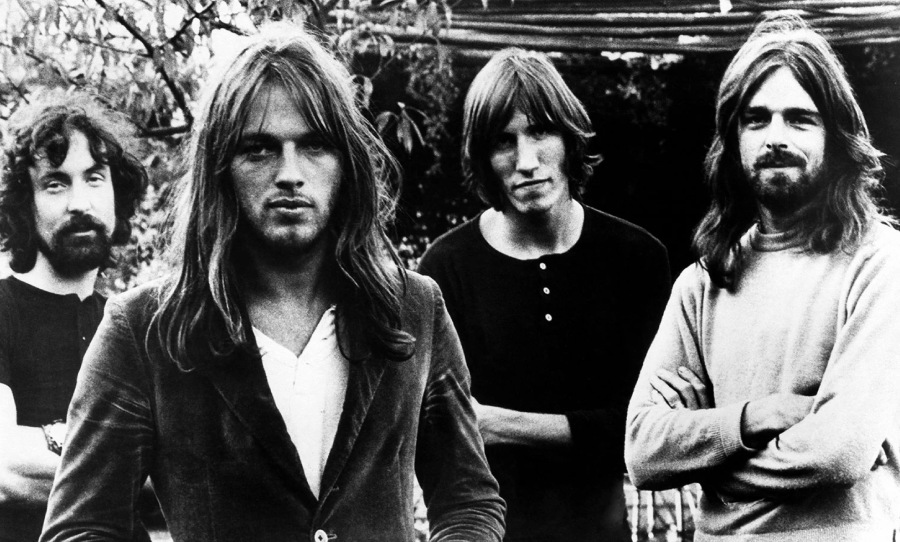“The idea in this song is that we might be lonely, but we could be lonely together.” That’s Joe White, guitarist and vocalist of Rolling Blackouts Coastal Fever, talking about their single Talking Straight, but it very well could be describing their entire sound.
Since 2015, the band have been making driving rock ‘n’ roll that stabs at the heart and nourishes the soul. Combining elements of indie, country, and a little bit of psychedelia, the 5-piece straddle a line between melancholy and joyful – the kind of feeling that nostalgia provokes (there’s a word for it, but it’s escaped me for now).
At their core, Rolling Blackouts Coastal Fever are all about rhythm – the product of a very tight fusion of drums, bass and acoustic guitar. On top of this is a complex layer of melody from two lead guitarists and three vocalists. What you get is an incredibly rich sonic palette, one that is driven forth by a knack for pensive lyricism and an undeniable Australian charm.
Their new album Hope Downs is a good one, and you should definitely listen to it. While you do so, here’s a chat with vocalist/guitarist Joe White about retreating to the country to record the album, keeping it pure, and the secret to their bitey, vintage guitar tones.
We speak with Rolling Blackouts Coastal Fever about their brilliant new album, Hope Downs, their mysterious 50s Gretsch, and getting a punchy drum sound.
Hey guys, loving the new album. How are you all feeling in the lead up to release?
Hey thanks! Feeling good. Been a long lead up so very keen to have it out and in some ears.
I love that you guys went to a house in the country to record the album rather than going into a studio. How did the country impact the album?
It was just a very pleasant environment to be in. There was none of the dark, cramped spaces of a studio. I slept outside every night and we cooked and ate outside the whole time. It was about being in a good, comfortable headspace when we went in and attacked the recording.
What was the space like?
It was essentially one big room. Raised on stilts like a Queenslander. It had a big door that opened up to reveal the canopy and the creek below. Liam had his gear set up in the corner, with us set up in a kind of live setting.
Tell us a bit about working with Liam Judson – how did he shape the record?
Liam was great to work with. He has a passion for tone that really helped shape the record. Meticulously adjusting mic placements and getting it just right. He has a certain ‘light touch’ kind of approach that suited us really well.
What were the sessions like – were you tracking together or in parts? The album does have a definite live feel…
Yeah we tracked all the drums, bass and rhythm guitars together live. We had enough time to run a lot of takes and try to find the perfect take. Often turning up the monitors and walking outside to get a feel for whether it was THE take. For Time In Common we recorded drums, bass and tambourine live together. The tambourine really helped drive the rhythm of that song. Bit of a nightmare for Doug, our mixer, but I think it was worth it. We overdubbed guitars and vocals.
Was there any gear that you felt really shaped the record?
We have an old Gretch, it’s believed to be from the 50s and it’s somewhat shrouded in mystery. It seems to have modifications that make it sound really unique. The sound of that guitar has defined our sound from the beginning, it’s so bitey and can really roar with a bit of amp overdrive. In turn, if you turn the volume knob down slightly, it has the sweetest tone you’ll ever hear.
Three guitars in a band is always interesting. How do you guys approach placing each guitar in your compositions?
We use guitar melodies, often doubled, as key features of our songs. We use the acoustic as primarily a rhythm instrument, or percussive even, so it leaves plenty of room for the electric guitars to create swell and then punch in with strong melodies.
Crunchy twang is such a big element of your lead sounds. What elements of your rigs really influence your guitar sounds?
We keep it pretty simple. The aforementioned mysterious Gretch plays a huge part in that crunchy twang sound. It’s literally just clean guitars going through the amp with the gain up a bit and the reverb up quite a lot. I used a DOD overdrive pedal to get the more sustained and fuzzy tones.
And I hear a bit of slide on Sisters Jeans – is this something you guys have explored before? What were you using?
Yeah we’ve explored it before but it never quite fit. That’s just my Pawn Shop Mustang with heaps of overdrive, delay and reverb all over it. I’m pretty sure (don’t quite recall) I used a beer bottle as a slide. That’s all I’ve ever used so I guess it’s my preferred slide apparatus.
Who are some big guitar heroes for Rolling Blackouts?
I’ve just thrown the question around the tour van…
We got Reni from The Stone Roses (Reni from The Stone Roses is the drummer but he’s influenced Fran’s rhythm guitar) and Neil Young. I love the way Gareth Liddiard approaches the guitar.
Are you guys big pedal heads? I hear a bit of phaser and plenty of overdrive throughout the new album.
I’d have to say we’re not pedal heads at all. Tom runs only a signal booster and a reverb pedal. I run a blues overdrive, an analog delay and a phaser. We had a lot of fun and spent a lot of time working on guitar sounds for this record. Towards the end of the two weeks, a valve in my amp was on the way out to it’s started to get these really interesting, cracked up kinda sounds. We’ll never be able to get those again!
How about amps – is there anything you favour in particular?
I use a Fender Blues Jnr and Tom uses a Vox AC15. These are the amps we’ve always used and we had no reason to change anything for this record.
Drums are such a driving force in Rolling Blackouts and on this album they’re super punchy. What was the set-up like during the session? They sound very hi-fi.
They were set up in the room with the rest of the band. I don’t know much about recording drums but from the very start, I knew Liam had done a great job. They sounded great straight off the desk. We weren’t too afraid of bleed so Marcel hit them nice and hard. I think that’s key to getting a full and punchy sound.
What drums are you using?
It’s a 1960s UK made Premier. And the snare drum is a 63 Ludwig Supraphonic.
Has recording this album changed much in terms of your live set-up or how you’ll approach playing live?
No not at all actually. It’s all pretty simple. We have a few more guitars to choose from now but ultimately it’s the same setup.
What’re the next few months looking like for you?
Once the album is out we’ll be touring pretty relentlessly. Hopefully will sneak in some demo sessions to get things rolling for the next album.
Hope Downs by Rolling Blackouts Coastal Fever is out now via Ivy League Records. Listen to it here.



